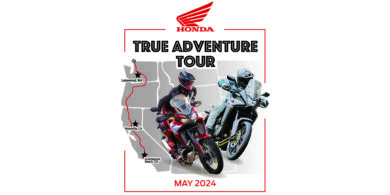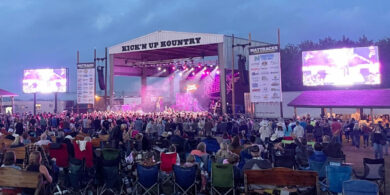How retail practices can add to big profit – June 5, 2006
REDWOOD CITY, CALIF. — Parts Unlimited Sales Rep. Paul Griffin begins a story about an ill-fated retail merchandising moment like it’s a bad joke being told at one of the other patio tables at this Bay Area restaurant.
“A woman walks in …,” Griffin begins. But what begins like a joke is actually no laughing matter for an industry that some insiders say is finally coming to terms with the importance of its retail merchandising practices.
Griffin, whose considerable experience in big box stores gives him a unique perspective, tells the story like this: A woman walks into a powersports dealership looking for a Christmas present for her husband. But there’s no signs pointing out the jackets’ features, few if any price tags and the only employee around seems anchored to the parts counter. It doesn’t take long for the woman to decide to shop at a place she feels more comfortable with, and on Christmas morning, her husband unwraps yet another Nordstrom’s sweater.
It’s a simple but pointed story that captures an industry flaw: the lack of general retail merchandising practices that more mainstream retail businesses have thrived on for years.
“We sell unnecessary premium-priced toys,” Ducati North America CEO Michael Lock recently said of Ducati, although he could have easily been talking about the entire industry. “And so the retail presentation, not only the look and feel of the showroom, the training for the staff, the stocking of the accessories, the technical knowledge, all of that. The more we can do with it, the better the result will be.”
The importance of adding PG&A profits to the bottom line isn’t lost on manufacturers or dealers. In fact, the amount of floor space dealers on average are adding for PG&A has increased each of the past five years, according to national surveys conducted for Powersports Business.
“As margins continue to slip on the major unit, then the need to be able to grow and enhance motor clothes, F&I, service and parts become obviously more important,” said John Story, a former America’s PowerSport’s executive and current managing partner of a Harley-Davidson store in Maine.
But successful retail principles that can drive the sales of PG&A have not been widely used or accepted.
“It’s just easy to see. The dealers that have great displays and great merchandising, their business is just so above and beyond badly merchandised stores,” said Claire Maguire, a regional sales manager for Calabasas Hills, Calif.-based Helmet House.
So what are the key retail merchandising practices that can lead to increased PG&A sales? Parts Unlimited’s Griffin preaches three principles that he learned at Best Buy and as a Home Depot manager: cleaned, signed and maintenanced.
The retail principles have been installed at several stores Griffin works with in California in a area stretching from Monterey north to south San Francisco. In six locations that have installed these principles, as well as expanded their run sizes and color selections and included a women’s only area, Griffin said the stores’ PG&A sales have surged by an amount that he thinks most dealers wouldn’t believe. That hard-to-believe sales increase? At least 400-500 percent.
CLEAN
The first part of Griffin’s retail merchandising trilogy is as simple as it sounds. “The product is clean,” he said, “and it’s the newest, most current product, and that’s really important with the motorcycle industry.
“If you have the newest product on the wall, it’ll have the wow factor enough that somebody will pick it up and look at it.”
Plus, when the consumer picks up the new product, there’s a fair chance they could end up buying an older version, Griffin said.
“Let’s say you don’t have a size 9 in a new (boot), but you have the old one. You can bring the old one out and say, ‘Sir, I don’t have the newest one yet. I can special order that and give it to you in a day. But what I do have is last year’s boot and here’s the difference in the features. And how about I give you (the older model) at 10 percent off today?’ ”
It all boils down to having that new product on the shelf.
“If you keep stocking old product thinking, ‘Well I have to sell my old product before we bring in any new stock,’ then you’re done,” Griffin said. “You and I have already seen that old product. We saw it two years ago when it first came out. We’re in a shop to look at the latest and greatest stuff.”
SIGNAGE
The rationale behind signs that highlight designated shopping areas or specific product features is to provide an easier shopping experience.
“Right off the bat, you’re making it that Nordstrom-atmosphere where they can shop unassisted,” Griffin said. “If every motorcycle dealership caught that passion where their store merchandized in that fashion, they would make money purely off that. It wouldn’t matter what product they had.”
Shopping unassisted requires the dealership to ensure price tags are placed on all products. Information that details specific product features also is key. Many times, manufacturers are providing these point-of-purchase shopping tools as part of product or clothing displays.
“That’s now becoming expected from the distributors and manufacturers where in the past that was more of an afterthought,” Helmet House’s Maguire said.
Griffin points out displays that speak to the specific product features can be as educating to new sales staff as they can be to the consumer.
MAINTENANCE
Once you have the new product and it’s requisite signage, then comes the diligent part of retailing: ensuring adequate inventory is in stock and the product on the floor is kept up. The latter can be a challenging task for an industry that often pays more attention to the shine on new units than the unkept accessories department.
“You’ll find half-empty shelves,” Maguire said. “You’ll find jackets hanging off their hangers. You’ll find boots in a big mess. The helmet shields are up. The helmets are facing different directions.
“If the store isn’t merchandised well, the customer sometimes can’t be bothered to spend time rifling though all the product they need.”
Incomplete inventory also can be a problem, resulting in a loss in sales and potentially a dealer’s customer base. This often occurs after a busy weekend when dealerships can run low on common product sizes. Without an effective inventory maintenance process in place, the next weekend quickly comes and a slow-acting dealership will be low on extra-large jackets and size 10 boots.
“Here’s the bad part,” Griffin said. “(The consumer) goes down to your neighbor and he gets that size 10 and the best service. They really paid attention to him, and they had the product in stock. Will he come back to your dealership again because you didn’t have that size 10? Maybe a second time. But if he comes back a second time and you’re out of stock again, you’ve probably lost that customer forever.”
Having a complete selection of sizes is particularly critical for women’s apparel, what industry insiders call a fast growing and very profitable side of the business. But don’t expect that customer to walk up to a male-dominated parts counter and ask for a larger size of jacket when only extra smalls and smalls are available, Griffin said.
“As long as it’s clean, signed and maintenanced and it’s in stock for her, she’s going to tell her girlfriends,” Griffin said. “They’re going to tell family members about this, and it will put you on the map for not being an all-male-biased store. That’s a real big profit loader right now, real big.”
And those types of profit potentials are making dealers rethink their merchandising displays and practices.
“I think we’ve really seen a change over the past years, and it’s still very much happening that we’re going into better retail merchandising displays that are big-box type philosophies of retail merchandising in powersports stores,” Maguire said. “As stores become more and more professionalized, displays are getting better and better.”
And better merchandising displays can lead to unexpected payoffs.
“Because a dealer presented their aftermarket goods better, there are now more people coming into their dealership,” said Greg Blackwell, vice president of sales for LeMans Corp., which owns Parts Unlimited and Drag Specialities. “By merchandising, you’re driving” in more potential consumers to the dealership. psb




